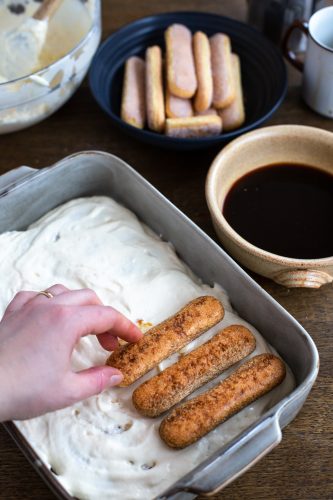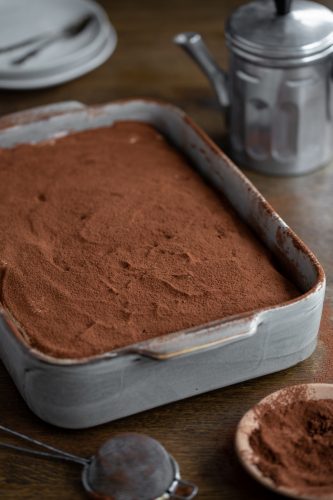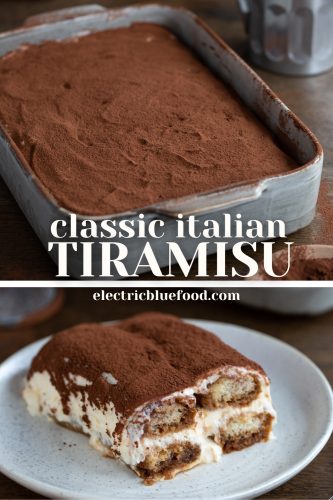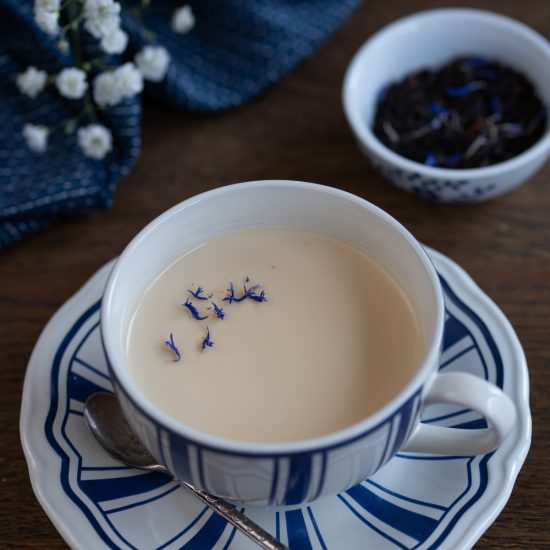Classic tiramisu is made with layers of savoiardi dipped in coffee between layers of fresh egg and mascarpone cream. The top layer of cream is finished with a dusting of cocoa powder. You only need 6 ingredients to recreate this timeless Italian classic in its most simple and elegant form.
Some people might be surprised but classic tiramisu has a very short ingredient list. In its most simple version, it only features mascarpone, savoiardi (ladyfingers), eggs, sugar, coffee and cocoa. No alcohol, no whipped cream. No need for lots of equipment either, really. Just an electric mixer and a coffee maker. Despite its prestigious reputation, tiramisu is actually a very easy dessert to prepare. This is what makes it so popular in Italian homes.

What does tiramisu mean?
Literally, tiramisù means pick me up. The dessert most likely got its name as it features espresso, that combined with sugar is sure to give you a nice energy kick. Despite being great at any time of day, tiramisù was originally created as an end of meal dessert. That’s how it is commonly served nowadays, featuring in the dessert section of restaurant menus.
There is an interesting word in Italian to describe the drowsiness that hits after a big meal, and that word is abbiocco. It is mostly translated into English as “food coma”, and there are only two remedies to that. One is to give in to a pennichella – a short siesta, or an after-lunch nap. But if you don’t have the time to lay down, the other best possible remedy is something that picks you up like a strong espresso or better yet, a cake that features espresso. Tiramisù.
Classic tiramisu ingredients
This is the most traditional tiramisù recipe with ladyfingers and raw eggs. If you cannot eat raw eggs you may pasteurize them by adding one part hot syrup to the beaten egg yolks.
The classic recipe calls for the use of savoiardi, ladyfinger biscuits. Depending on location you may have trouble finding them, as I have encountered this issue living abroad. If buying online is no option, homemade sponge cake is a viable alternative.
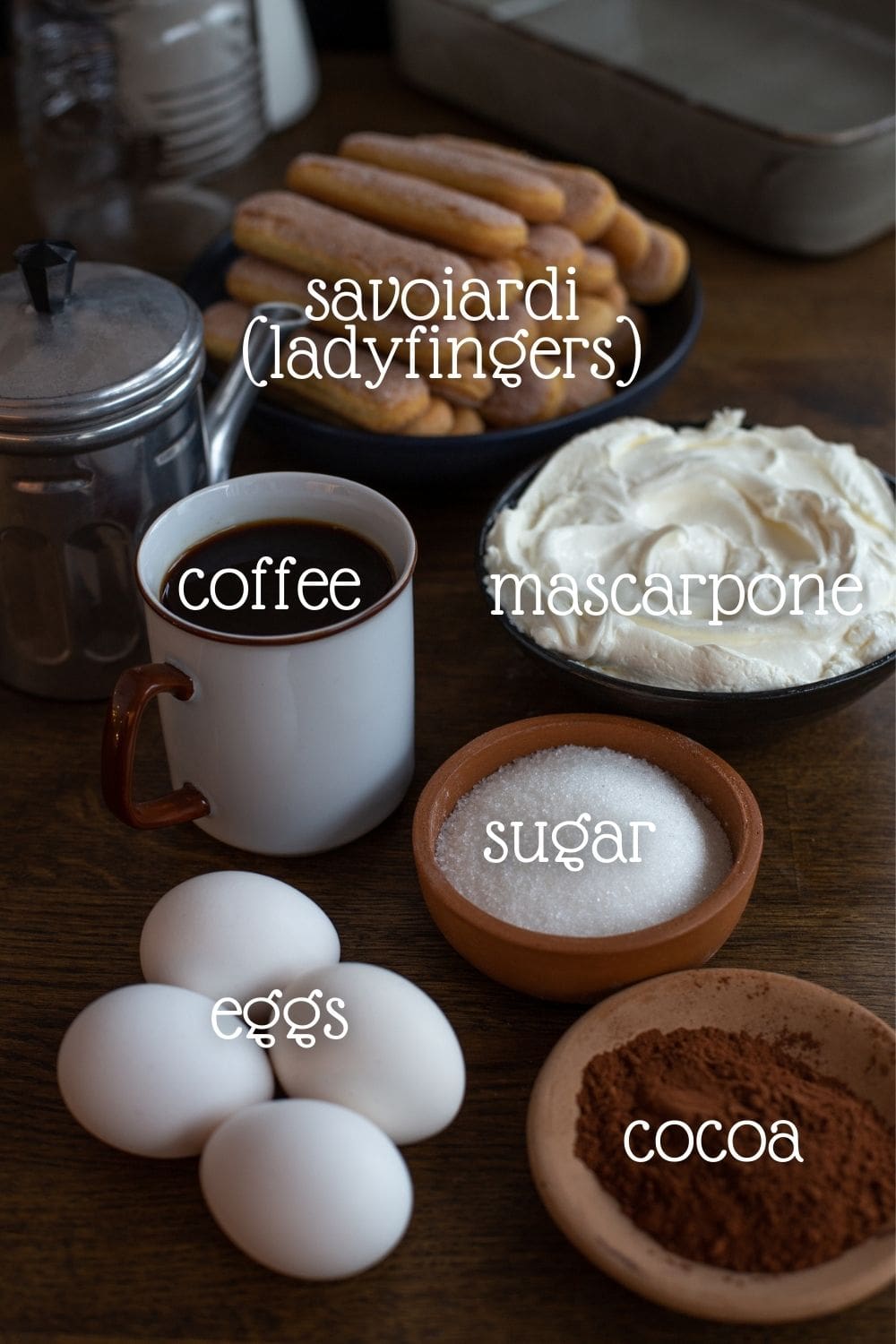
For exact quantities please refer to the recipe card at the bottom of this post. The standard quantities in this recipe work with a casserole dish measuring 18*26 cm (7*10 inches) and yields 8 portions.
Step by step instructions
- Separate the egg whites from the yolks and add them to two separate bowls. Beat with an electric mixer the whites to soft peaks, then incorporate half of the sugar and beat to hard peaks. In the other bowl beat the yolks with the rest of the sugar until fluffy and pale. Add the mascarpone to yolk mixture and mix until homogeneous, about 1 minute. Set the mixer aside and fold in the egg whites.
- Brew the coffee, stir in the sugar and let it chill to room temperature. Spread a thin layer of cream over the bottom of the casserole dish. Quickly dip the savoiardi in the coffee on both sides before placing each biscuit next to each other over the cream creating a biscuit layer.
- Spread another layer of mascarpone cream over the savoiardi, then proceed to create a second layer of coffee-dipped biscuits. Finally spread a top layer of mascarpone cream on top and sprinkle with cocoa powder all over.
Tiramisu recipe tips
The right texture of tiramisu is soft throughout so that when slicing it the knife or spoon should never encounter resistance. The mascarpone cream should be light and airy. In order to always nail the right texture, here are a couple of helpful tricks worth keeping in mind.
- Dip the biscuits in the coffee very quickly. Never let the ladyfingers soak too long in coffee. Overly soaked biscuits will bleed coffee once the tiramisu is assembled, excessively moistening the overall texture. So ideally your biscuits are still dry in the core when added to the dessert.
- Resting time is key. Since the biscuits are still somewhat crunchy as they go in the layers, the other trick to nail the proper soft texture is to let your assembled tiramisu rest. This will allow the savoiardi to absorb moisture from the cream, softening them to the core.

Recipe FAQs
Why is my tiramisu so watery?
Two are the possible causes of watery tiramisu. Overly soaked biscuits may release the excess coffee and increase the moisture level of this dessert. See paragraph above for dipping troubleshooting.
Alternatively, you may have overwhipped the mascarpone and caused its moisture to separate. Mascarpone does not require long beating, so stop the mixer as soon as you see that the mixture is homogeneous.
What kind of coffee is used in tiramisu?
The original tiramisù recipe calls for espresso, preferably brewed in a moka pot. Mostly, that’s because that is the traditional way of brewing coffee in Italy, where the recipe originates from. Even when other brewing options are available, espresso is preferred for its thicker and more concentrated quality.
If you don’t have an espresso coffee maker, you can use instant coffee for your tiramisù. Double the coffee granules to water ratio to get a texture similar of that of espresso. If you are using filter coffee you may “thicken” it by adding a couple of teaspoons instant coffee to freshly-brewed filter coffee.

Is there alcohol in tiramisu?
In my experience I have noticed that alcohol in tiramisù is more popular abroad than it is in Italy. One of the reasons might be in the fact that homemade tiramisu is often served to the whole family, while at Italian restaurants abroad it mainly targets adults.
However, there is no golden rule and if you like your dessert with a little kick, you may proceed and add a splash of liqueur to the cold coffee before dipping the savoiardi. Some liqueur options include: Amaretto di Saronno, Kahlua, sweet rum or even sweet marsala wine (this one goes right into the cream).
Can you make flavour variations?
The greatest thing about tiramisu (apart from its delicious texture and simplicity) is that it’s highly customizable! So you shouldn’t be surprised to find flavour variations of this timeless classic.
If you want to try something different, here’s some inspiration for you:
- Strawberry Limoncello Tiramisu – a summer tiramisu recipe that celebrates strawberries with a hint of one of Italy’s favourite liqueurs.
- Earl Grey Tiramisu – not a fan of coffee? No problem! Make this twist to classic tiramisu using tea – Earl Grey tea in this case. The notes of black tea and bergamot make this tiramisu delicate and aromatic.
- Small Tiramisu Cake – if you’d rather use homemade sponge cake than savoiardi, you may as well turn your tiramisu into a layer cake!
- Single-serve Tiramisu in a Glass – a smaller portion option if making a whole casserole dish sounds like too much.
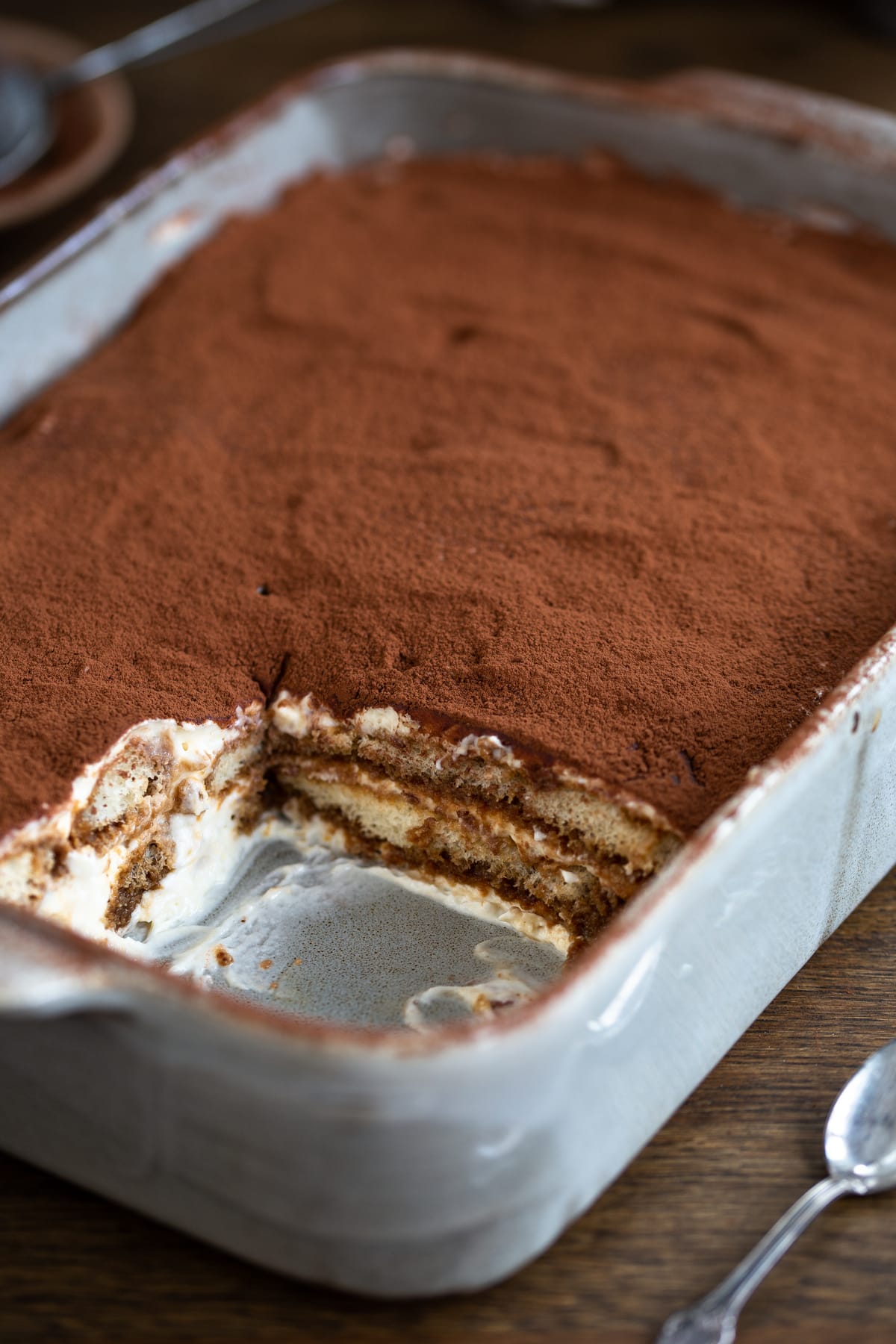
How to store
Being made with raw eggs and mascarpone, tiramisu is very sensitive to high temperatures. Always store tiramisu refrigerated and only take it out when it’s time to serve it. Furthermore, chilled tiramisu tastes much better.
Cover tiramisu leftovers with cling film and store refrigerated for up to 3 days. Do not freeze tiramisu as it may affect its texture upon thawing.
Since resting time is mandatory, tiramisu is the perfect make-ahead dessert. Make your tiramisu the day before you have to serve it and you will be sure it has rested long enough to have the perfect texture.
Drop a comment below and tell me what is your favourite tiramisu version. If you want to try this classic tiramisu recipe later, pin the recipe to Pinterest. Please consider subscribing to my newsletter and follow me on Instagram and Pinterest. Thank you!
Classic Tiramisu
Equipment
- 18*26 cm (7*10 inches) casserole dish
Ingredients
- 500 g mascarpone
- 4 eggs free range
- 100 g granulated sugar +2 tbsp divided
- 200 ml coffee preferably espresso
- 3 tbsp unsweetened cocoa powder
Instructions
- Brew the coffee, stir in 2 tbsp sugar and let chill to room temperature.
- Separate the egg whites from the yolks and add them to two separate bowls. Beat with an electric mixer the whites to soft peaks, then incorporate half of the sugar and beat to hard peaks.
- In the other bowl beat the yolks with the rest of the sugar until fluffy and pale. Add the mascarpone to yolk mixture and mix until homogeneous, about 1 minute. Set the mixer aside and fold in the egg whites. Refrigerate until the coffee has cooled to room temperature.
- Spread a thin layer of cream over the bottom of the casserole dish. Quickly dip the savoiardi biscuits in the coffee on both sides before placing each biscuit next to each other over the cream creating a biscuit layer.
- Spread half of the mascarpone cream over the savoiardi, then proceed to create a second layer of coffee-dipped biscuits. Finally spread a top layer of mascarpone cream on top and sprinkle with cocoa powder all over.
- Cover with cling film and refrigerate for a minimum of 2 hours, but best to leave overnight.
Notes
- Allow plenty of resting time. Since the biscuits are still somewhat crunchy as they go in the layers, the trick to nail the proper soft texture is to let your assembled tiramisu rest. This will allow the savoiardi to absorb moisture from the cream, softening them to the core. This step is not as crucial if using sponge cake, but even with sponge cake the flavour will develop better after a couple of hours.
- Dip the biscuits in the coffee very quickly. Never let the ladyfingers soak too long in coffee. Overly soaked biscuits will bleed coffee once the tiramisu is assembled, excessively moistening the overall texture. So ideally your biscuits are still dry in the core when added to the dessert.
- Classic tiramisù calls for the use of raw unpasteurised eggs. I only buy high quality free range eggs from verified farmers who comply with high ethical standard and trust their eggs to be eaten raw. If that raises a concern, you can bring half of the sugar intended in the cream to a boil with some water to make a simple syrup to be added hot to the yolks. This will pasteurise the egg yolks. Swap the whipped egg whites for whipped cream.


